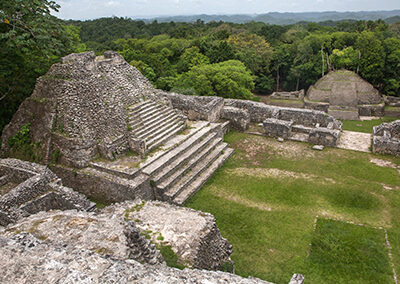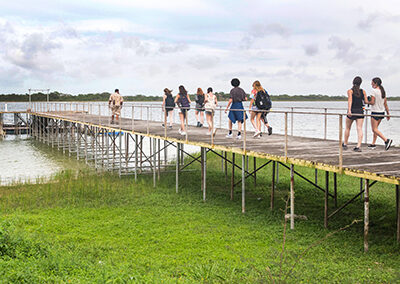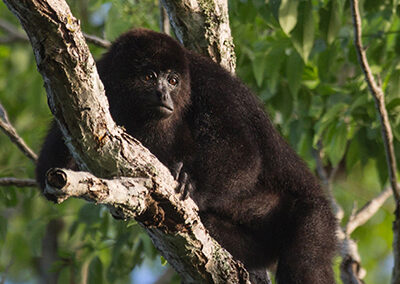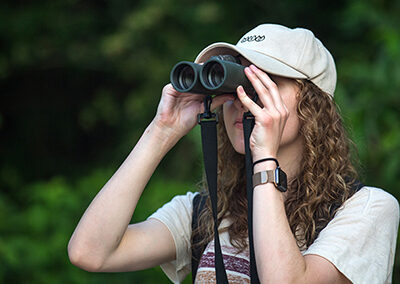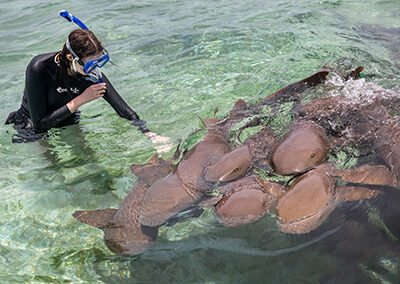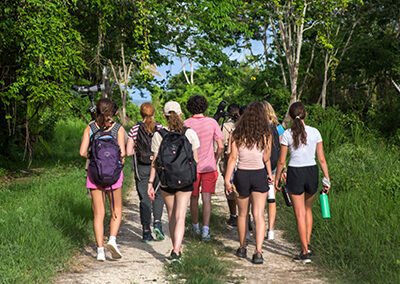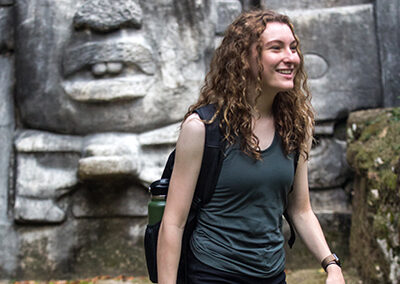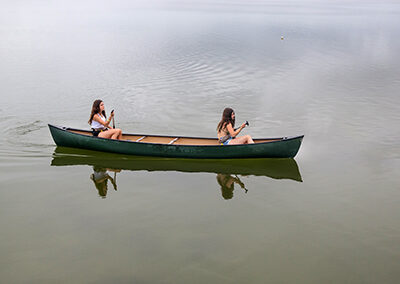Smithsonian Student Travel | Belize | NEW
Boasting the second longest barrier reef in the world, lush jungle reserves, hundreds of ancient Mayan archaeological sites, and breathtaking landscapes, Belize is a beacon of conservation and Central American history. Begin with a visit to Lamanai, the second largest Mayan site in Belize and one of the longest settled sites of the Mayan civilization. Explore temples and ritual sites alongside knowledgeable guides as you begin to put the country’s rich history into context. Then travel inland to the western city of San Ignacio. Visit howler monkey and iguana rehabilitation centers, taste artisanal Belizean chocolate, explore local markets, and climb the steps of the ancient Mayan City of Caracol. Travel by boat to Tobacco Caye to meet with marine scientists and conservationists and coral reef restoration experts. Snorkel the crystal waters and spot vibrant tropical fish, eels, and turtles. End the program at the Tropical Education Center in the Belizean Savannah and wander through the natural habitat of the world-famous Belize Zoo.
Highlights
-
Learn about Mayan history while exploring caves and ruins
-
Dive into cool jungle rivers and photograph majestic waterfalls
-
Experience native species with zoology professionals at The Belize Zoo
-
Snorkel along some of the world’s most impressive reefs with conservationists
Itinerary
This itinerary represents our plan for the program. However, we may implement changes if we identify opportunities to improve the experience, to take advantage of unexpected events, or to accommodate local schedule changes. Please also note that the July 14 departure follows a reverse itinerary order.
Lamanai • 3 days • Acclimate to Belize and get to know your travel companions while you stay next door to a Mayan archeological site nestled on the bed of a river brimming with diverse wildlife. Split into small groups and explore the river at night with a wildlife guide searching for nocturnal animals. Tour an ancient Mayan village with local guides who have personal ties to the region and its history. Spend your down time swimming in the river off the dock of the outpost or embark on a birdwatching walk with one of the many experienced guides. Learn to make tortillas with local people at a women’s co-op in the neighboring village of Indian Church.
Tropical Education Center • 2 days • Continue your exploration of Belizean ecology with exciting experiences at The Belize Zoo. Stay in rustic dormitory-style accommodations at the Tropical Education Center. Spend time with wildlife professionals and get up close and personal with Belizean indigenous species like the Tapir and Jaguarundi. Take an after hours tour with knowledgeable zookeepers for a peek into the lives of nocturnal animals and their habitats. Please note that the June 30 departure will stay at Monkey Bay, an outpost and reserve that neighbors the zoo where students will stay in rustic cabins while they participate in Zoo activities.
Tobacco Caye • 5 days • Travel by boat from the mainland to Belize’s barrier reef, the second-longest barrier reef in the world. Settle in at the Tobacco Caye Marine Station, a scientific research station located on a tiny island within the South Water Caye Marine Reserve. Work closely with the island’s staff and set out on the water for reef snorkeling. Sleep in a small inn close to the beach and experience the ocean through the lens of professional conservationists. Compare sea grass, mangrove, and coral reef habitats. During the day, observe sea turtles, rays, and scores of colorful fish. At night, shadow a marine biologist as you look for octopus, squid, and other bioluminescent creatures. Take a day excursion by boat to neighboring Carrie Bow Cay and visit the Carrie Bow Cay Field Station, a permanent site in the Smithsonian’s Tenenbaum Marine Observatories Network. Learn about Tobacco Caye Marine Station’s ongoing project to remove and study the invasive lionfish. Finally, meet with some of Belize’s leading shark and ray biologists to learn more about their declining population and important conservationist efforts to establish their populations.
San Ignacio • 5 days • The adventure continues in the lush, rolling hills and refreshing waterways of the Macal River. Day trip into the Mountain Pine Ridge, a forest reserve covering over 100,000 acres. Search for the national animal, the tapir, as you hike with guides along gorgeous rivers, swim in refreshing pools, and view waterfalls. Explore caves cut into the limestone rock and observe Maya artifacts left behind from ancient rituals. Climb the steps of temples at the ancient Mayan city of Caracol, still one of the highest man-made structures in Belize.
Return • Travel Day • Fly from Belize City, Belize, to Miami with your group and a trip leader, then continue on to your final destination.
Smithsonian Student Travel Expert

Dr. Bathala brings almost two decades of experience in higher education, teaching Ecology and Environmental Sciences at both the undergraduate and graduate levels. She will be joining the faculty at Villanova University this Fall and teaching courses in the Environmental Sciences. An ecologist by training, Dr. Bathala has participated in numerous local and global conservation projects. She has degrees from Rutgers University (BS), Temple University (MA), Duke University (MEM) and the University of Georgia (PhD). During her graduate studies at Duke University, Dr. Bathala studied conservation biology in Costa Rica with the Organization for Tropical Studies (OTS). She has spent time at numerous biological research stations in Costa Rica and has volunteered with sea turtle conservation efforts at Tortuguero National Park. In addition to her work in terrestrial ecosystems, Dr. Bathala has been involved in several National Science Foundation (NSF) post-doctoral Chautauqua Field programs studying biodiversity and marine communities in Belize, Hawaii, and the Galápagos Islands. Dr. Bathala has taught several marine-based ecology courses domestically and at the Honduras Roatan Institute of Marine Sciences (RIMS). She is a certified PADI SCUBA diver and has completed day and nighttime dives in the Caribbean and Pacific Ocean. Outside of her academic pursuits, Dr. Bathala is an award-winning author and continues to develop educational children’s books on environmental subjects. Her 2017 publication Moonlight Crab Count won the Children’s Book Council and Science Teachers Association, Outstanding Science Trade Book for 2018 and was selected for the 2021 Children’s Book Reading List for Social Activism. As an author, speaker, and educator, Neeti is involved in community public education on environmental issues. She is deeply committed to projects encouraging STEM, particularly for women in the sciences .
Neeti will be joining the June 30 departure of the Belize program.
What to Expect
Accommodations • Stay in rustic cabanas on the river’s edge in Lamanai. Enjoy picturesque mountain vistas at a privately run hotel in San Ignacio. Stay in a small inn on the beach in Tobacco Caye and end the program in simple dormitory-style bunks at the Tropical Education Center.
Climate • Belize is a tropical country with two seasons: wet and dry. We visit during the wet season. It rains often in brief showers, typically in the late afternoon. Daytime temperatures range from 85–95°F, while nighttime temperatures drop between 75–80°F.
Meals • All meals will be provided at the accommodations.
Cuisine • Belizean cuisine is hearty fare with rice, beans, and a delicious array of tropical fruits, such as papaya, mango, and pineapple, at almost every meal. A typical lunch consists of rice and beans, fish or chicken, vegetables, cheese, tortillas, and fruit.
Language • Belizean cuisine is hearty fare with rice, beans, and a delicious array of tropical fruits, such as papaya, mango, and pineapple, at almost every meal. A typical lunch consists of rice and beans, fish or chicken, vegetables, cheese, tortillas, and fruit.
Enroll in two programs & save $500!
$300 tuition discount + no second application fee

